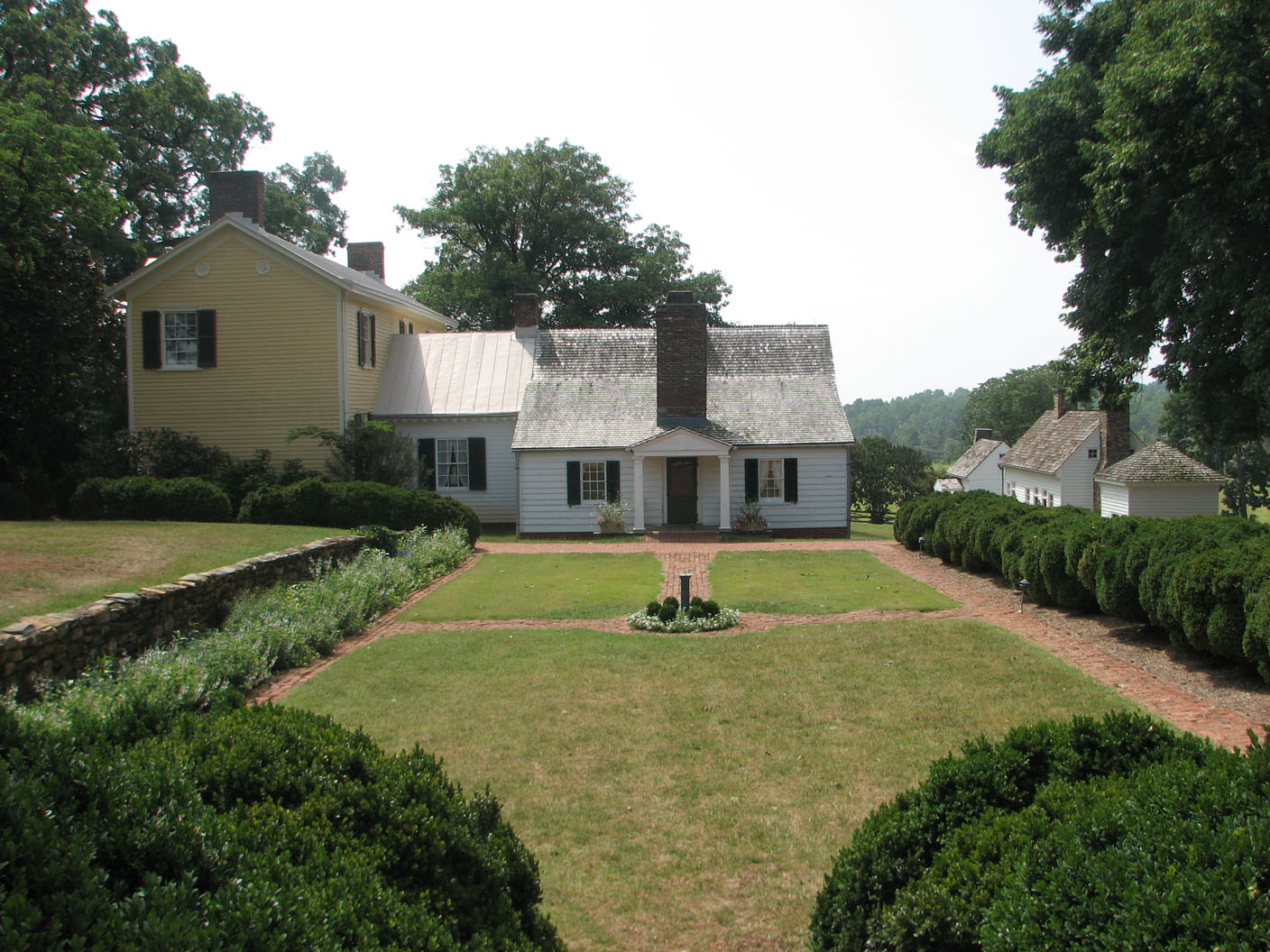- Ash Lawn-Highland
Infobox_nrhp | name =Highland
nrhp_type =

caption =Ash Lawn-Highland. Note: The yellow wing was added on by later owners.
nearest_city=Charlottesville, Virginia
lat_degrees = 37
lat_minutes = 58
lat_seconds = 46
lat_direction = N
long_degrees = 78
long_minutes = 27
long_seconds = 16
long_direction = W
locmapin = Virginia
area =
built =1799
architect=Thomas Jefferson
added =August 14 ,1973
governing_body = Private
refnum=73001990 cite web|url=http://www.nr.nps.gov/|title=National Register Information System|date=2007-01-23|work=National Register of Historic Places|publisher=National Park Service]Ash Lawn-Highland, located near
Charlottesville, Virginia ,USA , and adjacent toThomas Jefferson 'sMonticello , was the estate ofJames Monroe , fifthPresident of the United States . Purchased in 1793, Monroe and his family permanently settled on the property in 1799 and lived at Ash Lawn-Highland for twenty-four years. Personal debt forced Monroe to sell the plantation in 1825.President Monroe simply called his home "Highland." It did not acquire the additional name of "Ash Lawn" until after his death.
The estate is now owned, cared for and operated by Monroe's "alma mater", the
College of William and Mary .History
Monroe Establishes Highland
Encouraged by his close friend, Thomas Jefferson, Monroe purchased a deed for one thousand acres (4 km²) of land adjacent to Monticello in 1793 for an equal number of pounds from the Carter family. The land formerly had been a part of the
Blenheim Plantation owned byChampe Carter . [http://etext.virginia.edu/users/fennell/highland/ashlawn1.html An Account of James Monroe's Land Holdings by Christopher Fennel] ] Six years later, Monroe moved his family onto the plantation, where they resided for the next twenty-four years. In 1800, Monroe described his home as:::"One wooden dwelling house, the walls filled with brick. One story high, 40 by 30 ft. Wooden Wing one storey high, 34 by 18 ft."Over the next 16 years, Monroe continued to add on to his home, adding stone cellars and a second story to the building. He also expanded his land holdings, which at their greatest included over 3,500 acres (14 km²). However, by 1815, Monroe increasingly turned to selling his land to pay for debt. By 1825, he was forced to sell his home and the property.Highland post Monroe
Edward O. Goodwin purchased Highland from Monroe at twenty dollars an acre and often referred to the property as "North Blenheim." At the time of the purchase, he described it as:::"commodious dwelling house, buildings for servants and other domestic purposes, good stable, two barns with threshing machine, a grist and sawmill with houses for managers and laborers . . . all in good repair."Goodwin sold the house and six hundred acres (2.4 km²) in 1834 and it was sold again in 1837 toAlexander Garrett . Garrett gave the property its second name which remained with it to the present day, "Ash Lawn." Over the course of thirty years, Ash Lawn-Highland was sold numerous times until 1867, whenJohn Massey purchased it. It remained in the possession of the Massey family for the next sixty-seven years. In that time period, the family added to the house, where upon it took on its present day appearance.Ash Lawn-Highland was sold for the last time in 1930 to
philanthropist Jay Winston Johns ofPittsburgh, Pennsylvania . The Johns family soon after opened the house to public tours and upon his death in 1974, Johns willed the property toJames Monroe 's "alma mater", theCollege of William and Mary . [ [http://www.ashlawnhighland.org/aboutus.htm Ash Lawn-Highland.org] ]Ash Lawn-Highland Today
Wikimedia Foundation. 2010.
